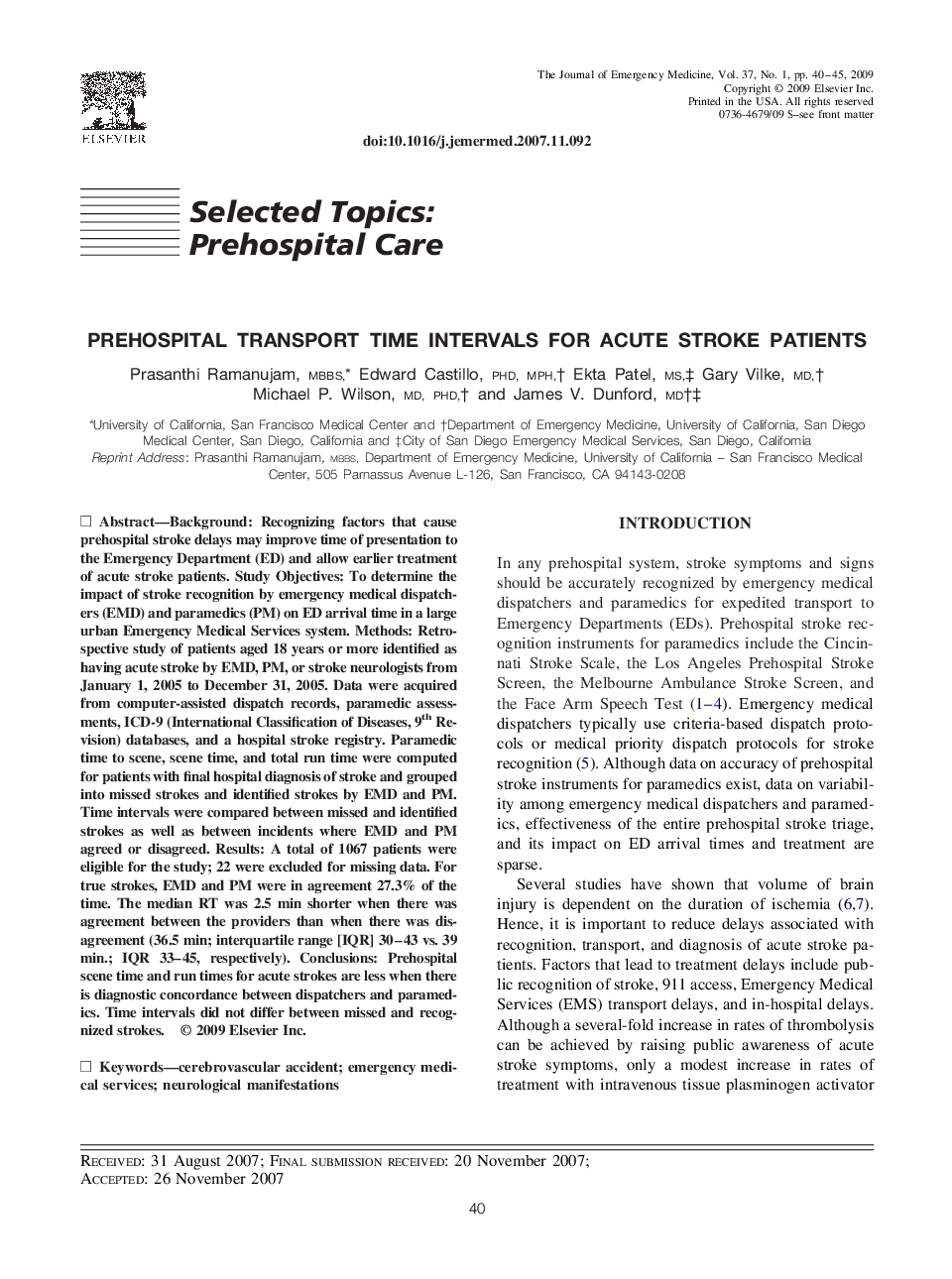| کد مقاله | کد نشریه | سال انتشار | مقاله انگلیسی | نسخه تمام متن |
|---|---|---|---|---|
| 3249171 | 1589192 | 2009 | 6 صفحه PDF | دانلود رایگان |

Background: Recognizing factors that cause prehospital stroke delays may improve time of presentation to the Emergency Department (ED) and allow earlier treatment of acute stroke patients. Study Objectives: To determine the impact of stroke recognition by emergency medical dispatchers (EMD) and paramedics (PM) on ED arrival time in a large urban Emergency Medical Services system. Methods: Retrospective study of patients aged 18 years or more identified as having acute stroke by EMD, PM, or stroke neurologists from January 1, 2005 to December 31, 2005. Data were acquired from computer-assisted dispatch records, paramedic assessments, ICD-9 (International Classification of Diseases, 9th Revision) databases, and a hospital stroke registry. Paramedic time to scene, scene time, and total run time were computed for patients with final hospital diagnosis of stroke and grouped into missed strokes and identified strokes by EMD and PM. Time intervals were compared between missed and identified strokes as well as between incidents where EMD and PM agreed or disagreed. Results: A total of 1067 patients were eligible for the study; 22 were excluded for missing data. For true strokes, EMD and PM were in agreement 27.3% of the time. The median RT was 2.5 min shorter when there was agreement between the providers than when there was disagreement (36.5 min; interquartile range [IQR] 30–43 vs. 39 min.; IQR 33–45, respectively). Conclusions: Prehospital scene time and run times for acute strokes are less when there is diagnostic concordance between dispatchers and paramedics. Time intervals did not differ between missed and recognized strokes.
Journal: The Journal of Emergency Medicine - Volume 37, Issue 1, July 2009, Pages 40–45